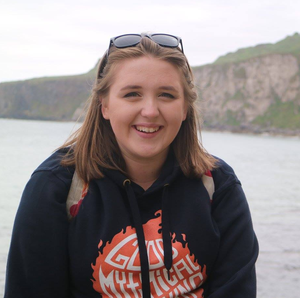9316937
Volcanic Landforms
Description
Slide Set by Antonia Blankenberg, updated more than 1 year ago
More
Less

|
Created by Antonia Blankenberg
over 7 years ago
|
|
Resource summary
Slide 1
Volcanic Landforms
What is a volcano?Where do volcanoes occur?Positives and Negatives of VolcanoesTypes and Examples of Volcanic Landform
Slide 2
What is a volcano?
A volcano is an opening in the crust of the Earth which allows molten rock to build up forming a variety of structures, most commonly a mountainous landform.
Slide 3
Where do volcanoes occur?
Volcanoes form at 3 different locations:Destructive plate margins - where subducted crust melts and rises to the surface. Constructive plate margins - where magma rises through gaps between plates.Hotspots - where the mantle is unusually hot, causing chains of volcanoes to form. The Pacific Ring of Fire in particular is home to many volcanoes.
Slide 4
Positives and Negatives of Volcanoes
PositivesGeothermal EnergyTourismFertile SoilsNew LandMinerals
NegativesDestruction Poisonous/Burning GassesAsh CloudsLahars (mudflow)
Slide 5
Types of Volcano: Cinder Cone
A cinder cone is the simplest form of volcano.Cinder cones are typically round in shape and are composed of layers of cooled lava.Cinder cone eruptions are usually more violent in nature and there is often gas built up in the vent.
Example: Paricutin, Mexico
Caption: : Crater of Paricutin, Mexico
Slide 6
Types of Volcano: Shield Volcano
Shield volcanoes form from basic lava which has a low silica content and is quite runny in nature.Because the lava is runny, it spreads out before solidifying.Shield volcanoes typically have a wide base and gentle slopes to their peak.
Example: Mauna Loa, Hawaii
Caption: : Haleakala, Hawaii
Slide 7
Types of Volcano: Stratovolcano
A stratovolcano is a large volcano which is composed of layers of cooled and hardened lava, ash, and tephra (rock fragments).Stratovolcanoes usually have steep sides, unlike shield volcanoes and have very explosive eruptions.
Example: Mount St. Helen's USA
Caption: : Mount St. Helen's USA
Slide 8
Types of Volcano: Caldera
A caldera is a volcano which has collapsed in on itself, this usually happens when the magma chamber of the volcano is emptied. This can also occur when there is a particularly violent eruption which causes the volcano to lose support. Calderas, particularly older ones, quite often contain lakes in their depressions.
Example: Crater Lake, Oregon, USA.
Caption: : Crater Lake, Oregon, USA
Slide 9
Types of Volcanic Landform: Lava Tubes
Lava tubes typically form from pahoehoe (basic) lava, which is runny.Runny lava tends to cool very quickly in comparison to acidic lava; when there is a flow of this lava under the surface, its edges can cool and harden while the lava is still flowing. This process creates a straw-like cave, some of which are large in nature.Lava tubes are only found under the surface of the Earth as when basic lava runs on the surface, it typically moves in a fanned out pattern.
Example: Valentine Cave in Lava Beds National Monument, California.
Slide 10
Types of Volcanic Landform: Geysers
A geyser is a hot spring heated by geothermal energy.Geysers are typically found in volcanic areas and are often tourist attractions. As water is heated, it expands and pressure builds under the surface. The eruption of a geyser acts as a release of pressure for this water.
Example: Old Faithful, USA.
Want to create your own Slides for free with GoConqr? Learn more.
